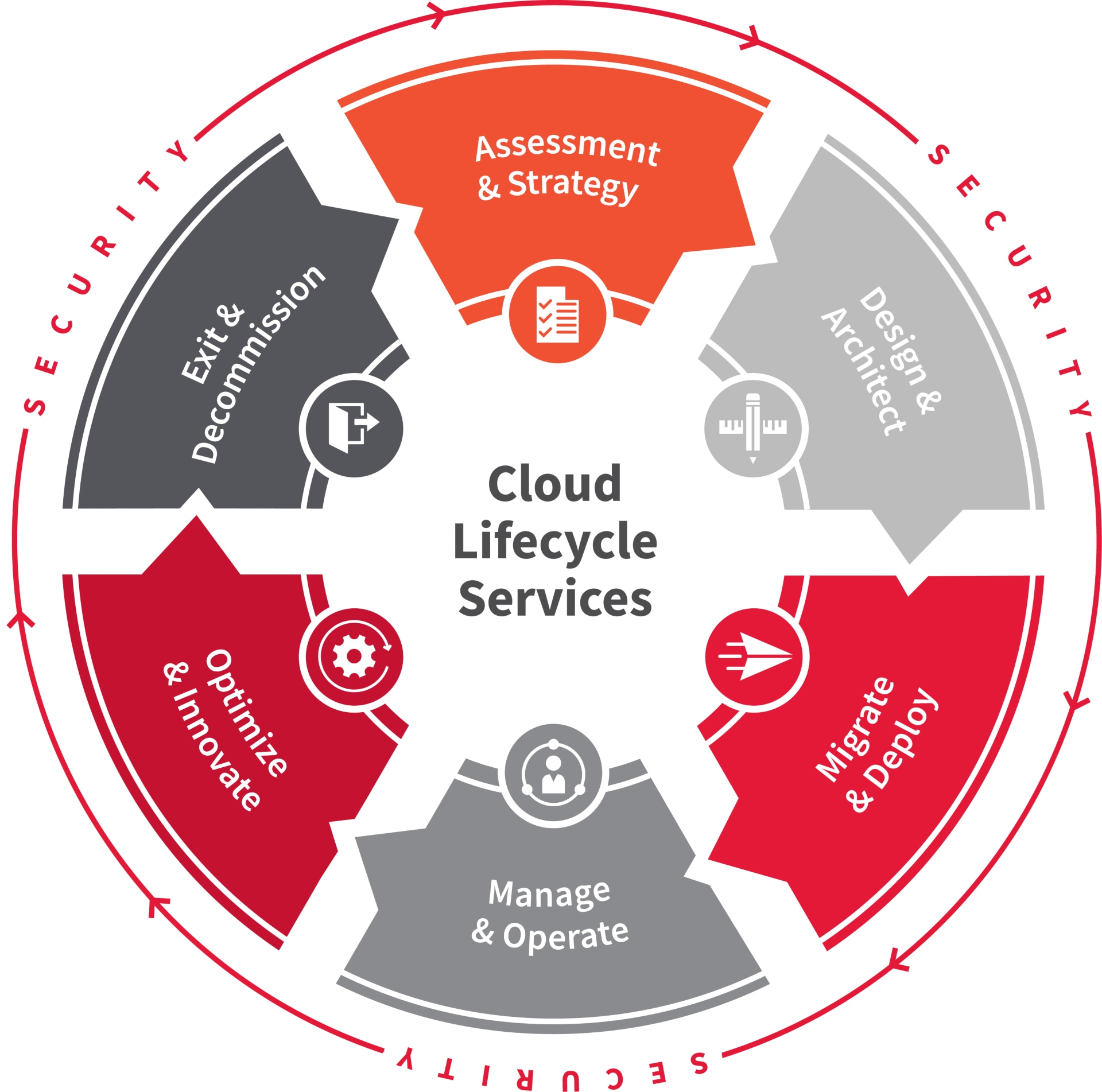July 24, 2024
A Full-Lifecycle Approach to Maturing Your Cloud in a Dynamic Cloud-First World
The role of cloud native in cloud lifecycle longevity and agility.
Change is the only constant, as the saying goes. After acquiring VMware last year, Broadcom announced the termination of their enterprise license agreements (ELAs), leaving many organizations orphaned and migration to another hypervisor imminent. Acquisitions such as these happen frequently, but there’s a bigger picture here — the reality is that cloud native applications and services continue to drive cloud transformation.
Organizations don’t just want cloud native applications, they don’t have a choice if they want to stay in the game. So, what is the best practice benchmark for preparedness and agility in the face of changing dynamics of a cloud-first economy? CDW cloud experts say a holistic lifecycle approach to cloud maturity with an emphasis on cloud native is the best path forward.
Understanding the Cloud Lifecycle
What is cloud lifecycle and how do you ensure smooth transitions and continuous optimization on the road to cloud maturity?
The cloud lifecycle encompasses the entire process of moving to, managing and eventually decommissioning cloud solutions. Here, we break down the six critical steps in the cloud lifecycle to guide you through your cloud migration and maturity journey.
1. Assessment and strategy
The first step in the cloud lifecycle is to assess your current IT infrastructure and develop a strategy tailored to your organization's needs. This involves evaluating your existing applications, workloads and data to determine which cloud platforms (e.g., AWS, Azure, Google Cloud) align with your business goals.
2. Design and architecture
Once the assessment is complete, the next step is to design and architect your cloud environment. This involves creating a blueprint that outlines the infrastructure, network and security requirements needed to support your cloud deployment. A well thought out design ensures your cloud environment is scalable, resilient and secure.
3. Migrate and deploy
The migration phase involves moving your applications and data from on-premises infrastructure to the cloud. This process can be complex and requires careful planning to minimize downtime and ensure data integrity. Using tools and services delivered by cloud providers and their partners can simplify the migration process and ensure a smooth transition. While most organizations are already operating in the cloud in some capacity, this holds true for migrations in general, whether lifting and shifting, refactoring or replatforming.
4. Manage and operate
After migration, the focus shifts to managing and operating your cloud environment. This involves monitoring performance, managing resources and ensuring compliance with security and regulatory requirements. Effective cloud management ensures your applications run smoothly and that your cloud environment remains cost-effective.
5. Optimize and innovate
Cloud optimization is an ongoing process that involves continuously analyzing and improving your cloud environment. This includes leveraging new features and solutions introduced by cloud providers to enhance performance and reduce costs. Innovation in cloud solutions can drive business growth and give your organization a competitive edge.
6. Exit or decommission
The final step in the cloud lifecycle is to exit or decommission cloud solutions that are no longer needed. This involves safely retiring outdated applications and ensuring data is securely archived or deleted. Proper decommissioning helps maintain a streamlined and efficient cloud environment.
Full-Lifecycle Approach: Cloud Lifecycle, Cloud Native and Cloud Maturity
With this foundation established, let’s delve into cloud maturity and continuous optimization and how they tie into the full lifecycle approach.
Emphasizing cloud native on your journey to cloud maturity brings several strategic benefits. First and foremost, cloud native strategies are designed to fully leverage the advantages of cloud computing, such as on-demand scaling, improved resource utilization and better resilience.
By developing and deploying applications that are inherently cloud native, organizations can optimize their use of cloud infrastructures, leading to increased agility and faster time-to-market for new features and services. That includes across clouds for anyone migrating from one cloud to another. Embracing a cloud native mindset allows you to leverage the latest cloud advancements to continuously refine and improve your infrastructure.
Ongoing optimization and innovation with an emphasis on cloud native is key to cloud maturity — enhancing operational efficiency, cost management, scalability, security, collaboration and customer experience.
When moving, expanding and maturing your cloud environment, there are certain constants.
1. Assessing applications and workloads: Brownfield vs. Greenfield applications
Assess your existing applications and workloads to determine whether they are suitable for migration or need to be refactored. Brownfield applications are existing applications that may require modifications for cloud compatibility, while Greenfield applications are new developments designed specifically for the cloud.
2. Security and risk compliance
Security is a critical consideration when accommodating new applications in the cloud. Implementing robust security measures and ensuring compliance with industry standards can mitigate risks and protect your data.
3. Performance and scalability
Performance and scalability are crucial factors in cloud transformation. Ensure that your cloud environment can handle varying workloads and scale as needed to meet performance demands.
Determining Your Level of Cloud Maturity
Achieving cloud maturity is a continuous process that involves leveraging new features and solutions to optimize your cloud environment. Here are some key considerations to help you determine your desired level of cloud maturity:
- Automation: How automated do you want your cloud operations to be? Automation can significantly improve efficiency and reduce human error.
- Serverless: Are you looking to adopt serverless computing? Serverless architectures can simplify application deployment and reduce costs.
- Artificial intelligence (AI) integration: Do you plan to build AI into your new workloads? AI can enhance decision making and drive innovation.
How CDW Can Help
CDW offers a comprehensive suite of cloud lifecycle services to help you achieve operational efficiency and agility. Our team of experts can assist with every aspect of cloud migration, from initial assessment to ongoing optimization.
Why Choose CDW?
Whether it’s managing your cloud environment or tackling cloud-related tasks, CDW has the expertise and resources to help you succeed. Our services include data transformation, organizational readiness, workload assessment, security and backup and full managed services with elastic engineering.
The clear advantages that come from working with a single partner that can see you through the entire cloud lifecycle include:
1. Cost efficiency: By opting for a fixed monthly fee, CDW managed services helps you bypass the substantial expenses associated with hiring and maintaining a full-time in-house IT team. This cost-effective approach ensures you get expert support without the overhead.
2. Access to expertise: As one of five companies worldwide with all three major hyperscaler MSP certifications, CDW provides access to skilled professionals who specialize in hyperscaler services. Whether it’s infrastructure management, cybersecurity, DevOps or application management, this kind of deep expertise is invaluable.
3. Proactive technical support: Unlike the old reactive break-fix model, CDW uses a proactive approach. CDW preemptively addresses issues such as security threats, hardware failures and software compatibility, minimizing downtime with our next-gen managed services offering.
4. Improved scalability: CDW managed services are scalable, allowing your relationship to grow or shrink alongside your business needs. As your company expands, CDW can adapt to support your IT requirements.
5. Advanced cybersecurity measures: CDW provides security services to protect your IT infrastructure, systems and data from cyber threats like malware, hacking and data breaches. All of this is inherently built into our comprehensive managed services offering.
6. Core business focus: By outsourcing IT management to CDW, you can focus on growing your business while leaving technology and security in capable hands.
The transition to cloud-native applications and services is not just a trend; it's a necessity for staying competitive in today's business environment. By following a full lifecycle approach to cloud maturity, organizations can optimize their cloud environments, leverage new technologies and achieve operational excellence.
For CTOs, CEOs and CIOs looking to lead their organizations through this transformation, understanding the cloud lifecycle and essential considerations is crucial. Partnering with a trusted advisor like CDW can provide the support and expertise needed to navigate this complex journey successfully.



